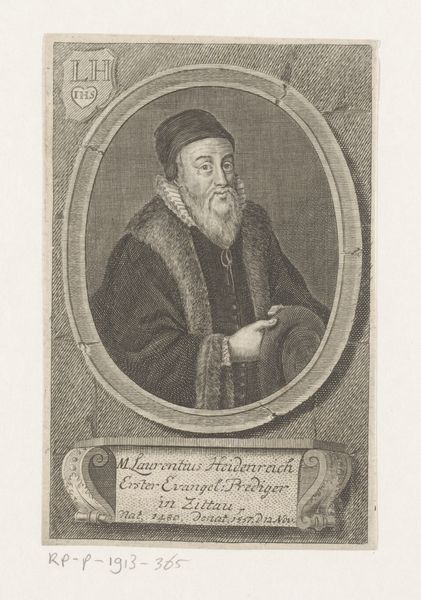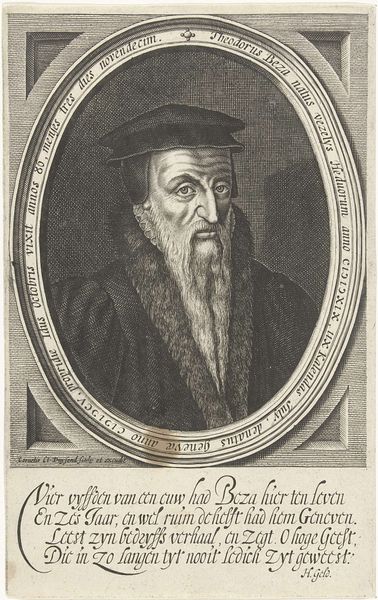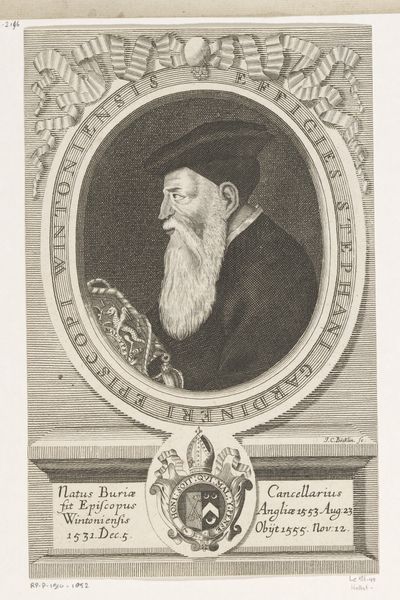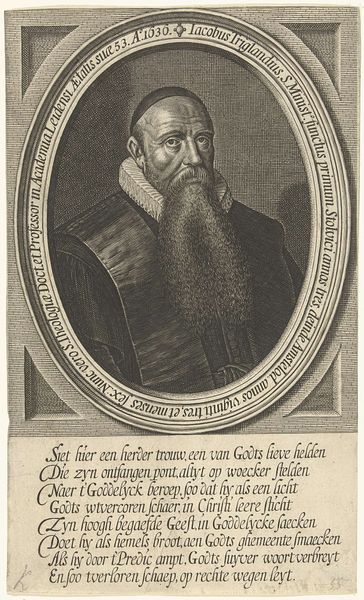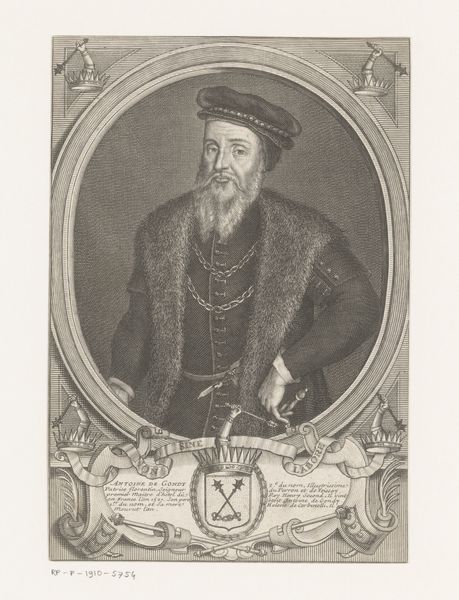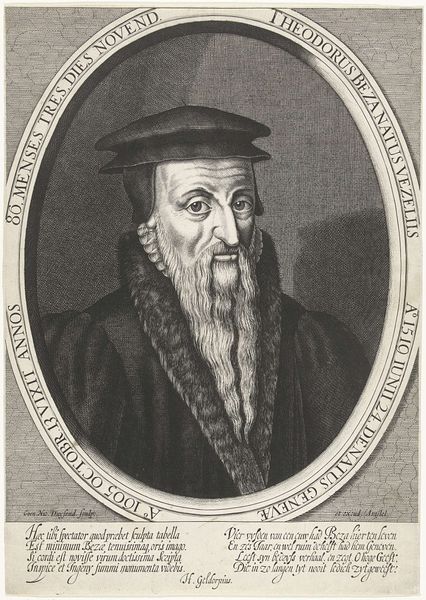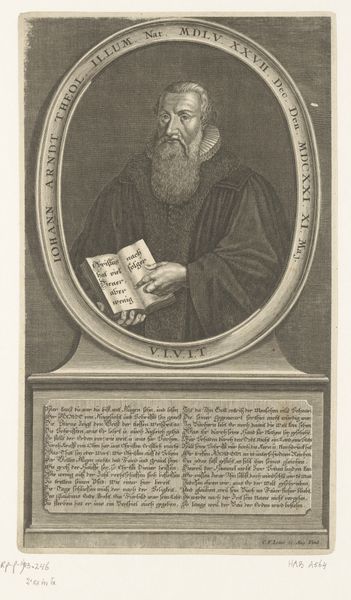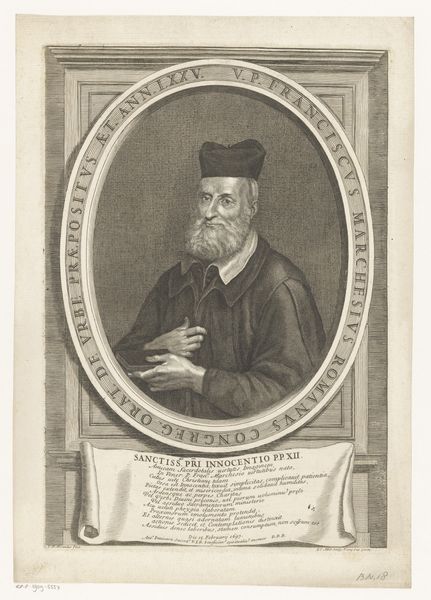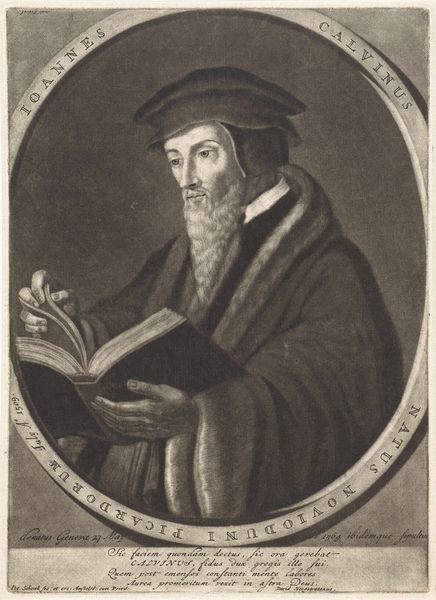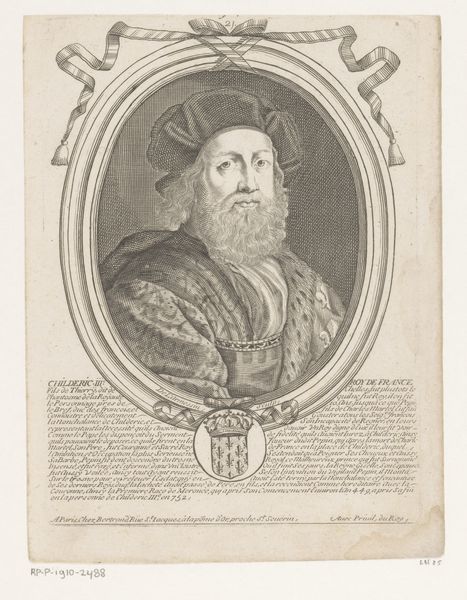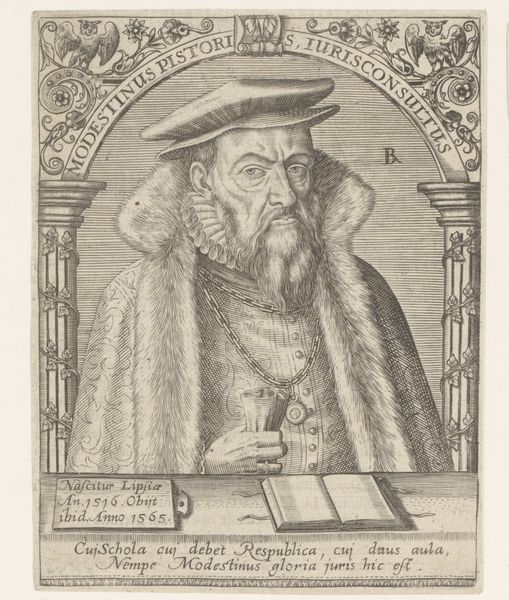
print, engraving
#
portrait
#
baroque
# print
#
caricature
#
history-painting
#
engraving
#
monochrome
Dimensions: height 318 mm, width 182 mm
Copyright: Rijks Museum: Open Domain
Editor: This engraving, "Portret van aartsbisschop Thomas Cranmer" by Pieter van Gunst, circa 1669 to 1731, has a very formal and austere quality to it. It's imposing. What stands out to you most about this print? Curator: It's fascinating to consider how a portrait like this one, of Archbishop Thomas Cranmer, participates in constructing historical memory and justifying certain political stances. It's not merely a representation of an individual, but a careful presentation of power and legacy within the volatile religious and political landscape of the time. Think about the deliberate choice of baroque style – what connotations does that bring to mind, especially when depicting a key figure in the English Reformation? Editor: Baroque suggests grandeur and authority. So, is this engraving aiming to legitimize Cranmer's role, despite the controversies surrounding the Reformation? Curator: Precisely. The print's monochrome aesthetic and use of framing devices adds to the sense of established history, a fixed narrative. It invites questions about how figures like Cranmer have been used to solidify particular national and religious identities over centuries. Do you see the text included at the bottom? Consider its role here. Is it informative, commemorative, or something else entirely? Editor: I see... The text seems like an epitaph, reinforcing a specific interpretation of Cranmer’s actions and motivations. Almost like a carefully crafted piece of propaganda? Curator: That’s a potent word for it, propaganda. Perhaps, it's an exercise in image crafting. Reflect on the agency involved: who commissioned this work? What biases might have informed its creation? Even visual representations can become tools for shaping public opinion. Editor: So it’s less about historical accuracy and more about projecting a certain image? That's very different from what I initially thought! Curator: Indeed. Analyzing art in this way encourages us to understand art as not neutral records, but active participants in social and political discourse. Thanks for engaging with these complex issues with me!
Comments
No comments
Be the first to comment and join the conversation on the ultimate creative platform.

